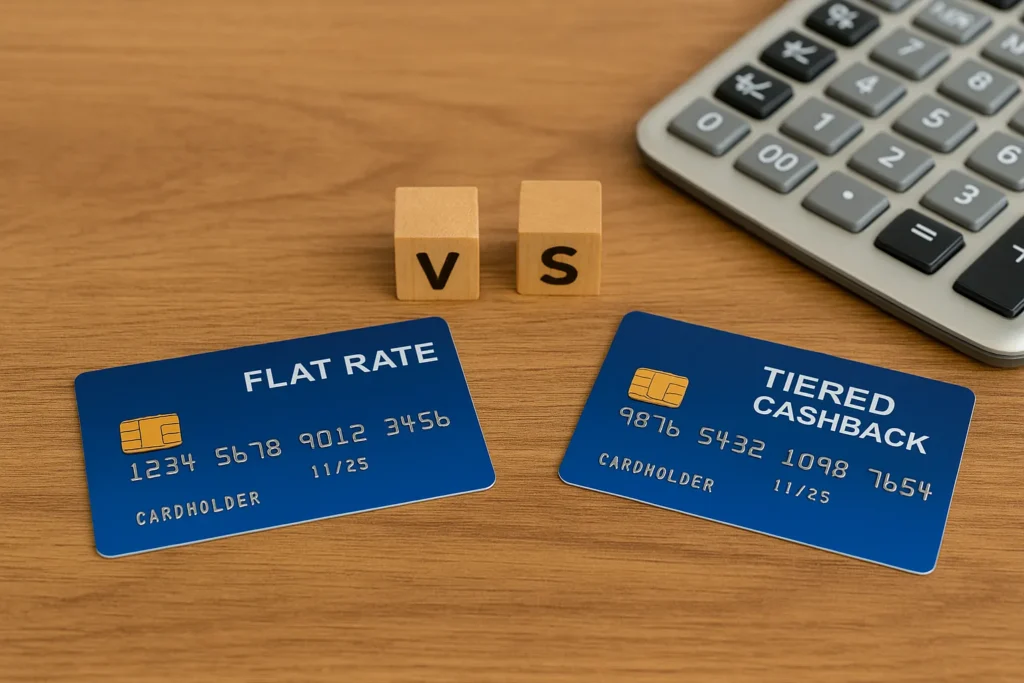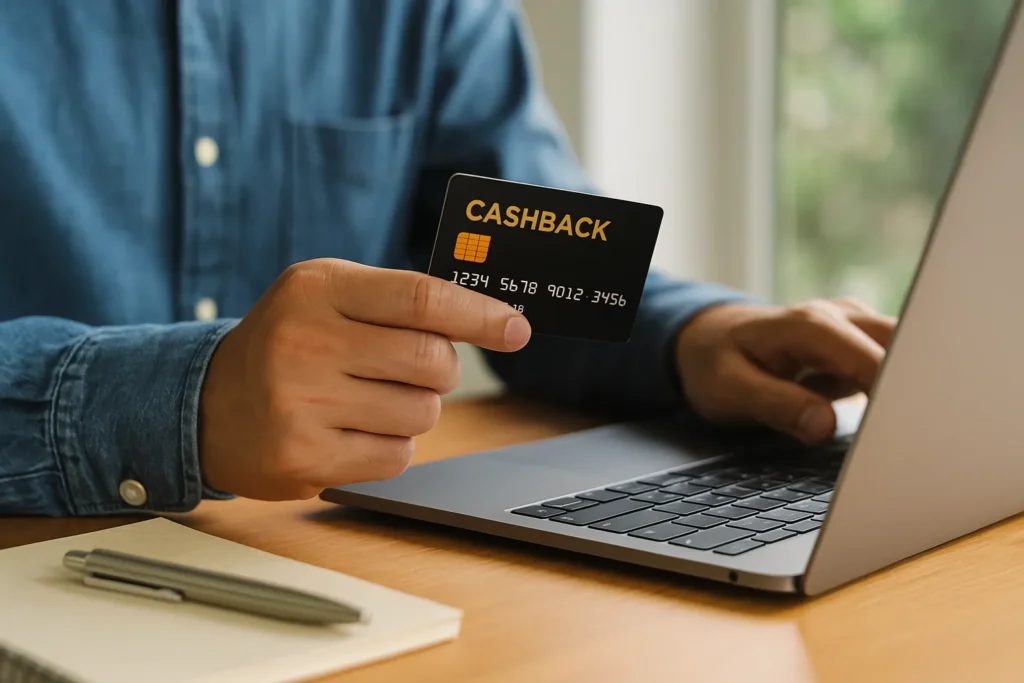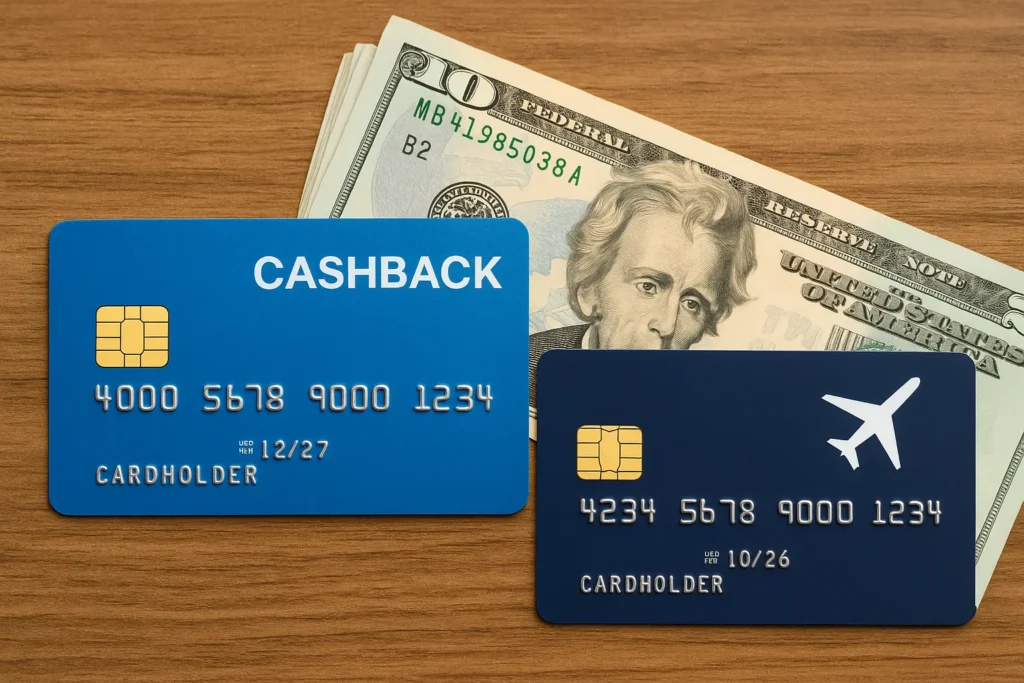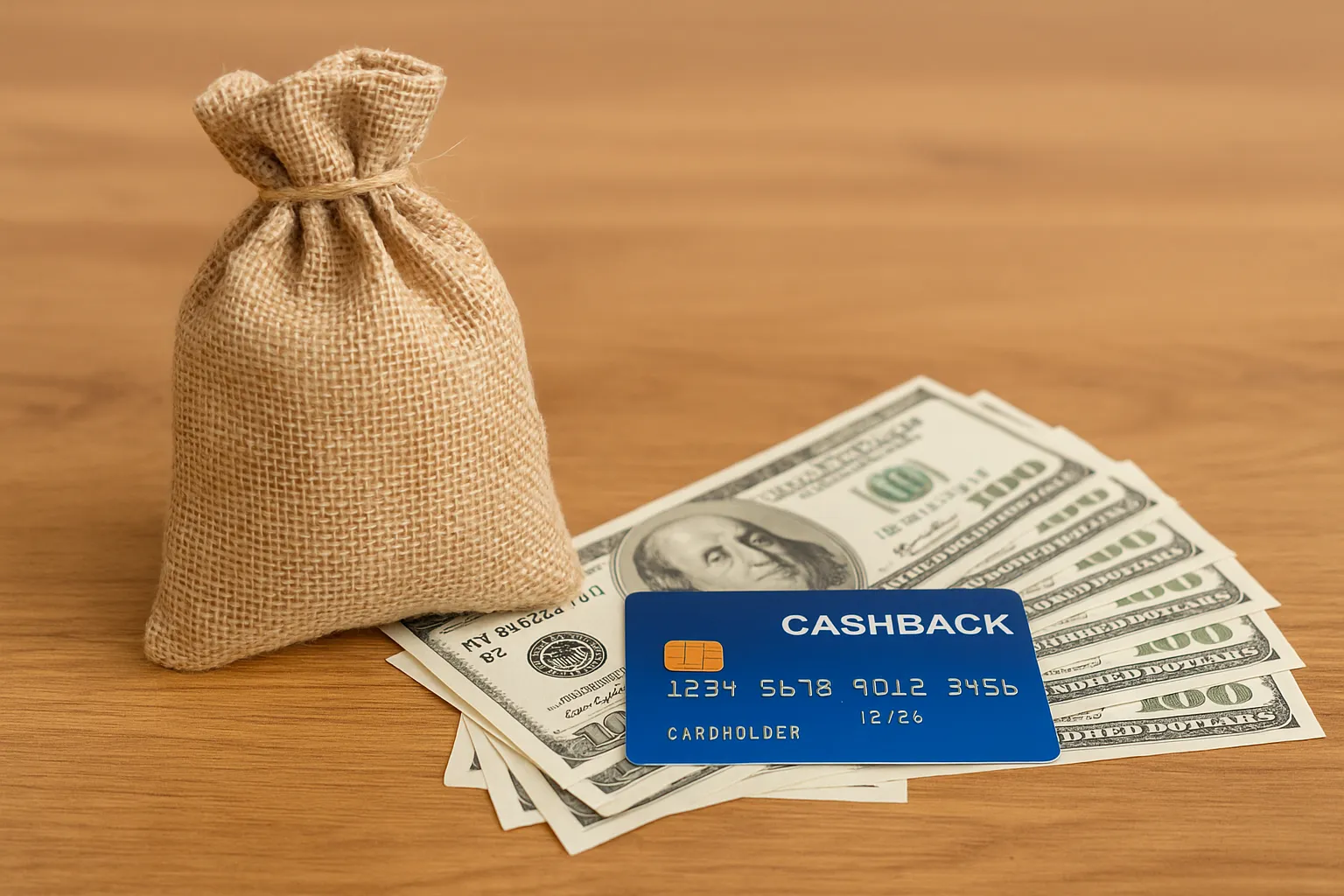Honestly, the rewards from cashback credit cards can be tempting, but they’re often not worth the risk for most Aussies. When you consider the annual fees, interest rates, and spending traps, those attractive rewards quickly lose their appeal.
We get it. You’re hit with flashy ads promising “earn while you spend” and “free money back.” But the thing is, credit card companies aren’t handing out freebies from the goodness of their hearts. They make their profit from fees and interest, and encourage you to spend more.
In this article, you’ll get the straight facts about cashback credit cards and whether they put money back in your pocket. We’ll cover:
- How cashback cards work
- Hidden costs that destroy your rewards
- Strategies to maximise your returns
- Whether cashback beats other reward types
Let’s dig into the story behind those tempting cashback offers.
How Cashback Credit Cards Work

Your cashback card works by giving you a percentage back on the purchases you make.
On most transactions, the card issuer pays you a small portion of what you spend, usually between 0.5% to 2%. This works because every time you swipe your card, the bank receives fees from merchants, and they pass a slice of that back to you.
What happens next depends on your card type. You’ll receive this money either as a statement credit directly to your account or as cash that goes straight into your bank account.
Let’s look at how different cards handle these rewards:
The Different Types of Cashback Rewards
Most cashback credit cards fall into two main categories: flat rate cards and tiered cards. Once you know which type suits your spending, you’ll understand how they work differently for your spending habits.
Regardless of what you buy, flat-rate cashback cards offer the same percentage back on every dollar spent. These rewards cards typically give 1% to 1.5% back on all eligible purchases. The benefit here is that you don’t need to worry about spending categories or your credit limit affecting your rewards.
However, for specific categories, tiered cashback cards provide higher rates. The way this works is you get different cashback percentages depending on where you shop:
- Groceries and petrol stations (often 2-4% cashback)
- Online shopping and department stores (usually 1-3% back)
- General purchases (standard 0.5-1% cashback rewards)
The best part is you’ll earn rewards points on eligible purchases, which convert to statement credit or direct deposits to your bank account.
Calculating Your Cashback Rewards
If you want to work out your potential earnings, the maths is straightforward but varies between cashback credit cards.
For flat rate cards, multiply your monthly spending by the cashback percentage. For example, a $2,000 monthly spender with a 1.25% card would earn $25 monthly in cashback rewards.
But many tiered rewards program cards give you more back on everyday purchases like groceries or petrol, while offering much less on other spending. This means your shopping patterns affect your returns.
Fun Fact: You may even need to spend $3,000 every year just to break even on annual fees with some cashback offers.
As you can see, the potential returns depend heavily on your spending patterns and card choice. Next, we’ll examine the hidden costs that often make these rewards far less attractive than they first appear.
Hidden Costs and Potential Risks
Are you really getting free money? Well, if you think about it, credit card companies aren’t in the charity business.
One way these companies profit is by making money from your spending habits and monthly fees. So obviously, they need some hidden strategies built into the system to make you generate more profit for them.
Here’s how cashback cards can cost you money without you realising it.
The Impact of Annual Fees and Credit Card Debt
It’s easy to overlook the real cost of your credit card when you’re focused on the cashback rewards. You become so excited about earning money back that you forget about the fees that eat into those earnings.
What you need to understand is that a hefty annual fee can wipe out your cashback rewards if you don’t spend enough to earn them back.
For instance, a $150 annual card fee means you need to earn at least that much just to break even. It’s like paying for a gym membership and never going.
Also, if you’re carrying debt on your credit card account, the interest charges can quickly make any cashback meaningless. Even during a balance transfer period when you’re paying lower rates, any new credit card debt while chasing rewards just defeats the whole point.
When Interest Rates Negate Rewards
The interest rates that you pay can destroy any rewards when you carry a balance from month to month. Here’s why: most cashback cards have purchase rates around 20% annually. That means you’re losing $20 in interest for every $100 you don’t pay off, while only earning back $1-2 from your cashback offer.
Suppose you earn 1.5% cashback but pay a 20% purchase rate on your outstanding credit card bill. That’s a net loss of 18.5% on every dollar you don’t pay off.
Again, some cards charge ongoing monthly fees that can add up faster than your ongoing cashback earnings. So, you’re going backwards financially while thinking you’re getting ahead.
We recommend paying your balance in full every month to make cashback cards worthwhile. If you can’t do that consistently, then go for a low-rate card to save money.
Maximising Your Cashback Credit Card

Now that you know the risks, let’s explore how to make your cashback credit card work for you.
The reason some people love these cards is that successful users treat them like a tool, not just a fast route to free money. When you approach cashback cards strategically, you can genuinely benefit from the rewards without falling into the traps we’ve discussed.
Let’s walk through the three main ways to make these cards profitable for your wallet.
Choosing the Right Card for Your Spending Habits
Before choosing a cashback card, first understand your own spending habits to ensure you pick a card that matches how you use money. This way, you’ll get the maximum return on investment from your spending.
What’s important is to look at your monthly spend on everyday purchases like groceries, petrol, and dining out. If you spend $800 monthly on groceries, a tiered card giving you 3% back on supermarket purchases makes sense.
But if your grocery spend is only $200 monthly, you’d earn more from a flat-rate card with no minimum spend requirements.
Pro Tip: Always check the fine print and eligibility criteria to make sure you can get that ongoing cashback without any surprises.
Using Bonus Points and Transfer Points Strategically
Beyond the base rate, experienced users use bonus points and other perks to boost their rewards program earnings. All you have to do is time your account opening and large purchases to maximise these offers.
Here’s how to use bonus and transfer points wisely:
- Exact Timing: Time large purchases during bonus point periods offered by your credit card provider.
- Convert Smartly: When conversion rates are favourable, convert rewards points to gift vouchers to stretch your dollars further.
- Stack Offers: To earn cashback faster, stack your account opening bonuses with everyday spend.
- Shop Around: For better redemption rates, transfer points between rewards credit cards when programs allow it.
However, keep in mind that rewards programs often change their terms, so what works today might not work next year.
The Value of Membership Rewards and Qantas Points
Is a dollar of cashback worth more, or is a Qantas Point (airline loyalty point) a better value? Well, it depends on how you plan to use your rewards and what redemption options suit your lifestyle.
When redeemed for travel, programs like American Express membership rewards and Qantas Points can offer excellent value, sometimes worth 2-3 cents per point. These programs work best for people who travel regularly and can use frequent flyer points effectively.
We once worked with a client who earned 50,000 Qantas Points but never travelled domestically or internationally. After we helped her transfer points to a partner program that offered cash equivalents, she realised straight cashback would have been much simpler for her lifestyle.
So far, we’ve focused entirely on cashback cards and their specific benefits and drawbacks. Let’s now compare how cashback stacks up against other popular reward types like travel points and shopping vouchers.
Cashback vs. Travel and Other Rewards Programs

In general, we suggest cashback cards as they offer the most straightforward value. But the best choice for you depends on your travel habits, spending patterns, and how much effort you want to put into managing rewards.
When you understand the trade-offs between different reward types, you can make a decision that saves you money rather than just looking appealing on paper.
Here are the main areas where cashback and travel rewards differ most significantly.
The Simplicity of Cashback vs. the Complexity of Travel Rewards
While the appeal of frequent flyer miles is strong, a cashback credit card is often a more practical choice for most Aussies.
One major advantage is that cashback rewards appear directly on your statement or bank account without any conversion hassles or blackout dates. You don’t need to worry about point devaluations, program changes, or complex redemption rules that can make ongoing cashback worth less over time.
Though travel rewards can give great value to frequent travellers, most people don’t travel enough to benefit from them. Another challenge with travel programs is that they require ongoing attention and strategic planning to extract value from your spending.
Complimentary Travel Insurance and Other Perks
Many premium rewards cards sweeten the deal with extras like complimentary travel insurance and exclusive benefits that sound impressive in the marketing materials. These perks can add genuine value to your credit card, especially travel insurance that might cost hundreds of dollars per trip (if purchased separately).
Plus, some rewards cards also offer airport lounge access, concierge services, and interest-free payment plans that can justify a higher annual fee. The question you need to ask yourself is whether you’ll use these benefits enough to offset the extra costs.
Let’s be honest, spending $400 annually on travel benefits for rare trips is like getting a library card just for the bookmark.
Making Better Choices About Cashback Cards
Many Aussies get burned by cashback credit cards because they focus on the rewards while ignoring the costs. The difference lies in understanding your spending habits and paying off balances monthly.
Throughout this article, we’ve explored how these cards really work, uncovered hidden fees that destroy rewards, and revealed strategies for genuine savings. You’ve also learned when to avoid these cards entirely and choose low-rate alternatives instead.
Now you can make informed decisions about whether cashback cards suit your financial situation.
Visit Unsubscribe Deals today to find verified cashback card offers that match your spending patterns. Our handpicked deals help you earn genuine rewards while avoiding the costly mistakes that trap millions of Aussies yearly.
